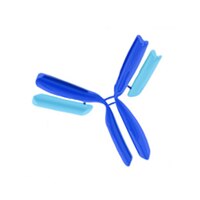444105 Sigma-AldrichAnti-Mannose 6-Phosphate Receptor Mouse mAb (2G11)
This Anti-Mannose 6-Phosphate Receptor Mouse mAb (2G11) is validated for use in Immunoblotting, IF, IHC, IP for the detection of Mannose 6-Phosphate Receptor.
More>> This Anti-Mannose 6-Phosphate Receptor Mouse mAb (2G11) is validated for use in Immunoblotting, IF, IHC, IP for the detection of Mannose 6-Phosphate Receptor. Less<<Recommended Products
Áttekintés
| Replacement Information |
|---|
Kulcsspecifikációk táblázata
| Species Reactivity | Host | Antibody Type |
|---|---|---|
| B, H, Mk | M | Monoclonal Antibody |
Products
| Katalógusszám | Csomagolás | Menny./csomag | |
|---|---|---|---|
| 444105-100UG | Muanyagampulla | 100 μg |
| Description | |
|---|---|
| Overview | Recognizes the ~300 kDa mannose 6-phosphate receptor protein. |
| Catalogue Number | 444105 |
| Brand Family | Calbiochem® |
| References | |
|---|---|
| References | Dintzis, S., et al. 1994. J. Biol. Chem. 269, 12159. Dintzis, S., and Pfeffer, S. 1990. EMBO J. 9, 77. |
| Product Information | |
|---|---|
| Form | Liquid |
| Formulation | In PBS. |
| Preservative | ≤0.1% sodium azide |
| Quality Level | MQ100 |
| Physicochemical Information |
|---|
| Dimensions |
|---|
| Materials Information |
|---|
| Toxicological Information |
|---|
| Safety Information according to GHS |
|---|
| Safety Information |
|---|
| Product Usage Statements |
|---|
| Packaging Information |
|---|
| Transport Information |
|---|
| Supplemental Information |
|---|
| Specifications |
|---|
| Global Trade Item Number | |
|---|---|
| Katalógusszám | GTIN |
| 444105-100UG | 04055977205411 |
Documentation
Anti-Mannose 6-Phosphate Receptor Mouse mAb (2G11) MSDS
| Title |
|---|
Anti-Mannose 6-Phosphate Receptor Mouse mAb (2G11) Certificates of Analysis
| Title | Lot Number |
|---|---|
| 444105 |
References
| Hivatkozások áttekintése |
|---|
| Dintzis, S., et al. 1994. J. Biol. Chem. 269, 12159. Dintzis, S., and Pfeffer, S. 1990. EMBO J. 9, 77. |







